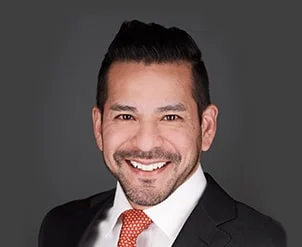Can I File Bankruptcy Again?

They say that lightning never strikes twice in the same place; unfortunately, financial misfortune comes with no such guarantee. Job loss, serious illness, divorce, and other unexpected emergencies may occur once in a lifetime or once a year, and it is almost impossible to predict when the next storm will arrive. That unpredictability and lack of control causes many people to file bankruptcy after having discharged their debts in a previous case. In many cases, bankruptcy is a fresh start, so debtors must identify poor financial habits and correct them, if they expect to move forward. In still other cases, a combination of unforeseen circumstances and poor management has people back in bankruptcy court.
Technically, there is no limit to the number of times that a person can file bankruptcy, or at least there is no such limit in the Bankruptcy Code. However, there are limits on the number of discharges, and it is important to know what they are and how they work.
Repeat Filings
Mistakes happen, and sometimes, debtors file in the wrong district or they file the incorrect paperwork. Such errors are particularly common in bankruptcy cases, because so many debtors attempt “do-it-yourself” bankruptcies. Other bankruptcies are dismissed later on for other reasons, such as a failure to make on-time trustee payments. At the same time, there are a few unscrupulous filers who have no intention of completing the bankruptcy process, and they simply want to use the automatic stay to prevent a foreclosure or repossession.
To balance things out, most courts have adopted some form of the serial filer rule. The exact rule varies by jurisdiction, but in most cases, if one case has been dismissed for any reason, the automatic stay expires after thirty days. The court will extend the automatic stay if:
- – The request is filed before the thirty days elapse, and
- – The debtor filed the new case in good faith.
If two or more cases have been dismissed in the past year, no automatic stay goes into effect unless the debtor files a motion and convinces the judge that the new filing is not in bad faith. Furthermore, if the court dismissed the prior bankruptcy with prejudice to refile, the debtor must wait 180 days before filing again.
Repeat Discharge
The rules in this area are a little tricky.
- – Prior Chapter 7/New Chapter 7: Debtors must wait eight years between Chapter 7 discharges.
- – Prior Chapter 13/New Chapter 13: There is normally a two-year waiting period between discharges, but that can change if the court did not confirm the plan in the prior case.
- – Chapter 13 then Chapter 7: Debtors must wait six years between discharges, unless the prior Chapter 13 took care of at least 70 percent of unsecured debts.
- – Chapter 7 then Chapter 13: Typically, the waiting period between discharges is four years.
Sometimes, a “Chapter 20” bankruptcy is the best course of action in these cases. If debtors are paying off tax debts or other nondischargeable obligations, it may behoove them to file a Chapter 13 immediately after a Chapter 7 discharge, to extend the automatic stay.
Count On Experienced Lawyers
If necessary, the Bankruptcy Code allows debtors more than one fresh start. For a free consultation with an experienced bankruptcy lawyer in Chicago, contact the Bentz Holguin Law Firm, LLC. We have offices in Illinois and Indiana.
Resource:
mab.uscourts.gov/mab/effect-repeat-filing-automatic-bankruptcy-stay


